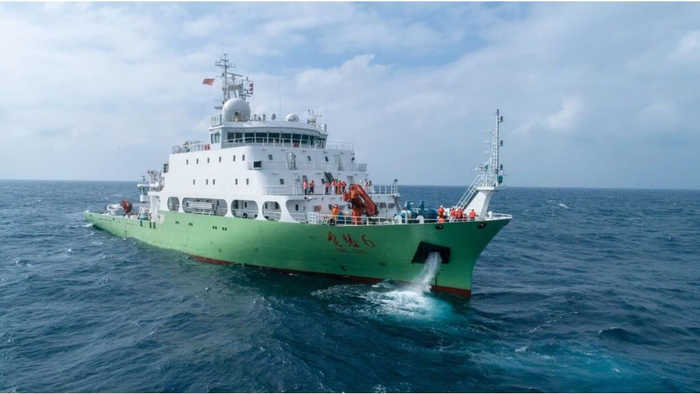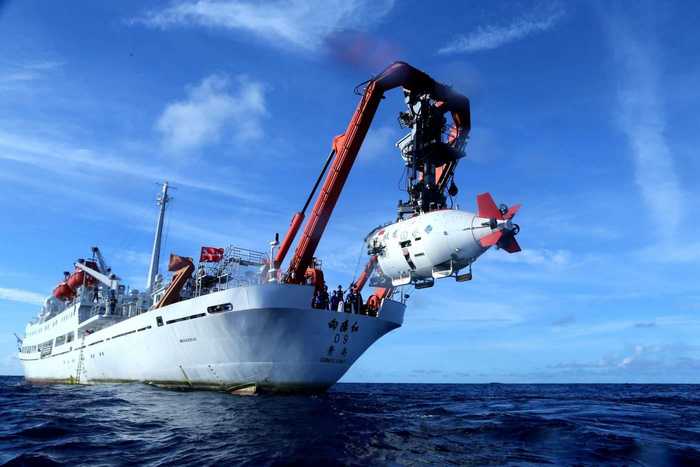Published 18:55 IST, January 1st 2024
Sri Lanka has implemented a 12-month ban on foreign research vessels in its waters, a move seen as addressing India's concerns over Chinese vessels in IOR.
Advertisement
Colombo: Sri Lanka, situated strategically at the edge of the Indian Ocean Region (IOR), has initiated a 12-month ban on foreign research vessels operating in its waters starting January 1. This diplomatic move is perceived as a significant victory for India, raising concerns over Chinese research vessels conducting operations under the guise of scientific research. The data gathered by these vessels, particularly valuable for Chinese submarines navigating the shallow waters of the Malacca Strait and East IOR, has been a source of consternation for India.
China's influence in Sri Lanka has grown significantly, notably with the acquisition of the Hambantota port lease. The moratorium comes amid China's request to dock its marine scientific research vessel, the Xiang Yang Hong 3, in Sri Lanka in early 2024. The decision is seen as a response to Indian Prime Minister Narendra Modi's 2023 plea to Sri Lankan President Ranil Wickremesinghe to consider Indian security concerns.
Advertisement
Dual-purpose research and geostrategic implications
Sri Lankan Foreign Minister Ali Sabry stated that the moratorium aims to enhance the nation's capacity for independent research activities. This diplomatic move also aligns with Sri Lanka's considerations in an election year, as it seeks to avoid further geopolitical complications with its neighboring countries.

Chinese research vessels, including the recent Shi Yan 6, ostensibly engaged in scientific missions, have raised alarms due to their dual-purpose data gathering. Beyond scientific experiments, these vessels collect crucial information on seabed conditions, impacting both civilian and military domains. Seismic data aids in assessing geological conditions, while information on hydrocarbons, water, and seabed conditions influences submarine detection capabilities.
Advertisement
India, keenly observing the increasing presence of Chinese vessels in the IOR, has expressed concerns about the enlarged Chinese naval footprint. Indian External Affairs Minister S Jaishankar highlighted the substantial growth in the size of the Chinese Navy, citing examples such as port-building in Gwadar (Pakistan) and Hambantota (Sri Lanka).
Chinese presence in South Asia: A "Triangle of Death"
The Chinese-run ports in South Asia—Chittagong (Bangladesh), Hambantota (Sri Lanka), and Gwadar (Pakistan)—form a "triangle of death," encircling India. While China insists its presence is benign, Indian experts warn of dual-purpose data collection by vessels like Shi Yan 6. Manned by a crew of 60, it claims to conduct oceanography, marine geology, and marine ecology experiments.
Advertisement

Chinese survey vessels have consistently operated in India's sphere of influence, with a particular focus on the Ninetyeast Ridge in the Indian Ocean. Naval experts assert the importance of this ridge for submarine operations, suggesting that data collected could enhance Chinese submarine activities in the region.
Instances of Chinese vessels near critical Indian Ocean chokepoints, such as the straits of Sunda and Lombok, have prompted concerns about potential detection systems. In the past, Chinese survey vessels have ventured close to the Andaman and Nicobar Islands, potentially aiming to understand the US Navy's 'fish-hook' sensor networks designed to detect Chinese submarines entering the Indian Ocean.
Advertisement
18:55 IST, January 1st 2024